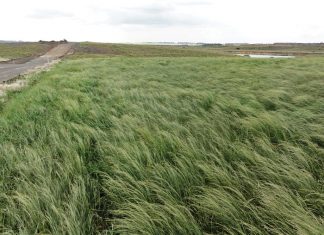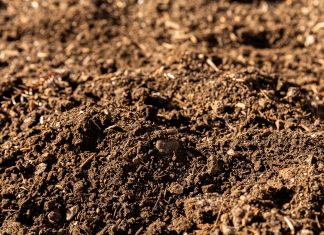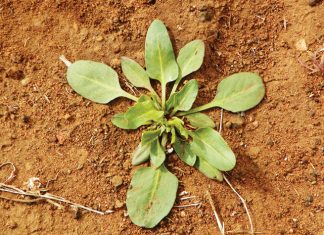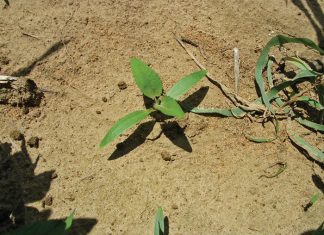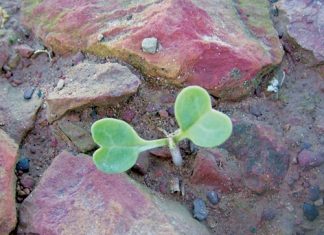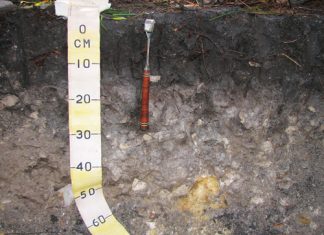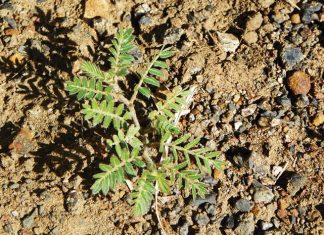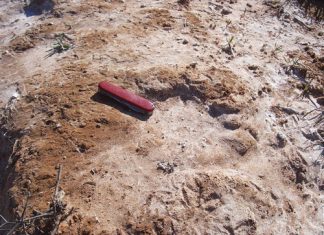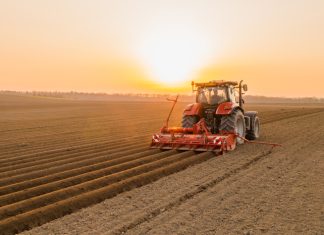Integrated crop and pasture-based livestock production systems – Part 25: Teff (Eragrostis tef)
This article is the 25th of a series of articles highlighting a specific crop species that can play an imperative role in conservation agriculture (CA)-based crop-pasture rotations. Besides improving the physical, chemical, hydrological and...
GROND: DIE PRODUSENT SE BELANGRIKSTE BATEDeel 22: Grondvorming
Grond vorm nie toevallig nie, maar vorm as gevolg van die invloed van klimaat, organismes en topografie op moedermateriaal oor tyd. Die resultaat van hierdie vyf grondvormingsfaktore is verantwoordelike die vorming van ‘n unieke...
Control of weeds in maize and wheat – Part 7: White goosefoot
Scientific name: Chenopodium album
Afrikaans name: Withondebossie, bloubossie, hondepisbossie, seepbossie of varkbossie
English name: White goosefoot, fat hen, wild spinach
Short description
White goosefoot is an annual, multi-branched, erect herb that can grow as tall as 1,5 m. This weed...
Grond: Die produsent se belangrikste bateDeel 25: Grondklassifikasie (ii)
Wanneer ‘n spesifieke grondliggaam geklassifiseer is, kan die eienskappe daarvan maklik gekommunikeer word. Voorts kan die eienskappe daarvan geïnterpreteer word, waarna die geskiktheid van dié grondliggaam vir ‘n spesifieke grondgebruik geëvalueer kan word.
In die...
Control of weeds in maize and wheat – Part 1: Spiny Emex
Scientific name: Emex australis
Afrikaans name: Kaapse dubbeltjie
English name: Spiny Emex, Three-cornered Jack, Devil’s thorn
Short description
Decumbent to semi-erect annual plants, up to 60 cm high when growing densely. Leaves and stems appear vivid green from seedling stage....
Control of weeds in maize and wheat – Part 12: Cocklebur
Scientific name: Xanthium strumarium
Afrikaans name: Kankerroos
English name: Cocklebur
Short description
Cocklebur is a branched, semi-herbaceous, annual plant, growing up to 1,5 m high, of which the seedlings are particularly poisonous.
Adult plants have deep, sturdy taproots and stems are...
Optimaliseer die bestuur van Ramenas deur sleutelkenmerke
Ramenas (Raphanus raphanistrum) is deel van die Brassica-familie of mosterdsoorte. Dit kom oorspronklik vanuit Noordwes-Europa en Asië. Raphanus beteken “vinnige verskyning” in Grieks, wat baie beskrywend is van hierdie probleemonkruid.
Uitkenning
Foto 1 tot Foto 7...
GROND: DIE PRODUSENT SE BELANGRIKSTE BATEDeel 17: Grondorganiese materiaal (iv)
Grond is die mees fundamentele hulpbron vir die produsent, waarsonder voedsel en natuurlike vesel nie geproduseer kan word nie. Hierdie artikel vorm deel van ‘n reeks om hierdie hulpbron toe te lig.
Organiese materiaal maak...
Control of weeds in maize and wheat – Part 4: Devil’s thorn
Scientific name: Tribulus terrestris
Afrikaans names: Dubbeltjie, platdubbeltjie, volstruisdoring
English name: Devil’s thorn, common dubbeltjie, burnut
Short description
Devil’s thorn is a pesky, annual endemic, creeping, prostrate weed that can spread up to 1 m in diameter.
The weed is multi-branched,...
SOIL: THE PRODUCER’S MOST IMPORTANT ASSET Part 18: Saline and sodium soils
Soil is the most fundamental resource for the farmer, without which food and natural fibre cannot be produced. This article forms part of a series to highlight this resource.
Salt and sodium enriched soils are...



